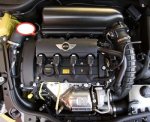Has anyone noticed a reduction in build up after long time use of 98 octane?
I have used 98 octane since owning the Tart. No doubt it would have helped for a cleaner burn, cleaner injectors and a cooler running engine (a bit), but will do naught to reduce the intake valve carbon buildup on a DI engine. My valves were coked after 70,000.
Last edited:


